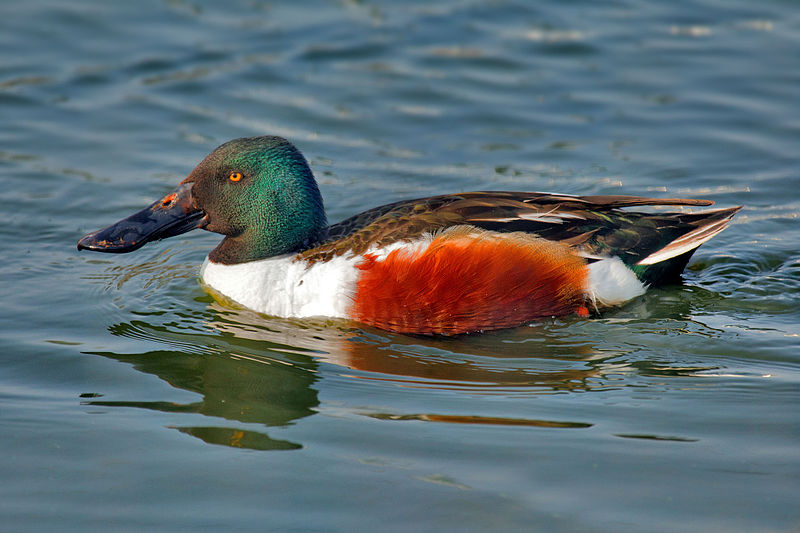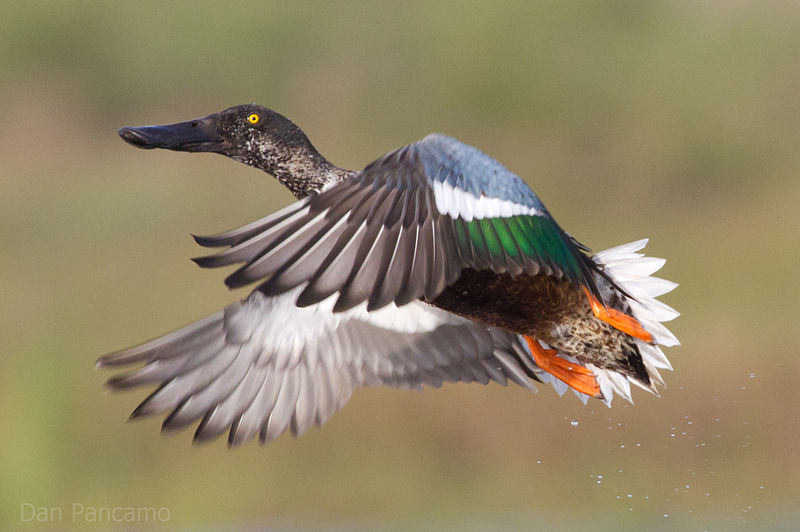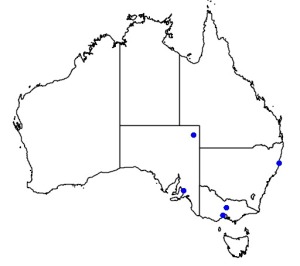Colours
Distinguishing features
This species is unmistakable in the northern hemisphere due to its large spatulate bill. The breeding drake has an iridescent dark green head, white breast and chestnut belly and flanks. In flight, pale blue forewing feathers are revealed, separated from the green speculum by a white border. In early fall the male will have a white crescent on each side of the face. In non-breeding (eclipse) plumage, the drake resembles the female.
The female is a drab mottled brown like other dabblers, with plumage much like a female Mallard, but easily distinguished by the long broad bill, which is gray tinged with orange on cutting edge and lower mandible. The female's forewing is gray. (Wikipedia)
Size
- Up to 50 cm (Length of specimen)
Wingspan
- Up to 78 cm
Synonyms
Distribution
Distribution and habitat preferences
This is a bird of open wetlands, such as wet grassland or marshes with some emergent vegetation.
This bird winters in southern Europe, Africa, the Indian Subcontinent, northern South America, and the Malay Archipelago. Those wintering in the Indian Subcontinent make the taxing journey over the Himalayas, often taking a break in wetlands just south of the Himalaya before continuing further south to warmer regions. In North America it winters south of a line from Washington to Idaho and from New Mexico east to Kentucky, also along the Eastern Seaboard as far north as Massachusetts. In the British Isles, home to more than 20% of the North Western European population, it is best known as a winter visitor, although it is more frequently seen in southern and eastern England, especially around the Ouse Washes, the Humber and the North Kent Marshes, and in much smaller numbers in Scotland and western parts of England. In winter, breeding birds move south, and are replaced by an influx of continental birds from further north. It breeds across most of Ireland, but in very small numbers. (Wikipedia)
Local abundance
- Australia: It is an occasional vagrant visitor to Australia.
Diet
Northern Shovelers feed by dabbling for plant food, often by swinging its bill from side to side and using the bill to strain food from the water. They use their highly specialized bill (from which their name is derived) to forage for aquatic invertebrates – a carnivorous diet. Their wide-flat bill is equipped with well-developed lamellae – small, comb-like structures on the edge of the bill that act like sieves, allowing the birds to skim crustaceans and plankton from the water's surface. This adaptation, more specialized in shovelers, gives them an advantage over other puddle ducks, with which they do not have to compete for food resources during most of the year. Thus, mud-bottomed marshes rich in invertebrate life are their habitat of choices. (Wikipedia)
Web resources
References
- Simpson, K., N. Day and P. Trusler (2004). Field Guide to Birds of Australia: 7th Edition Penguin Group (Australia), Camberwell, Victoria.







